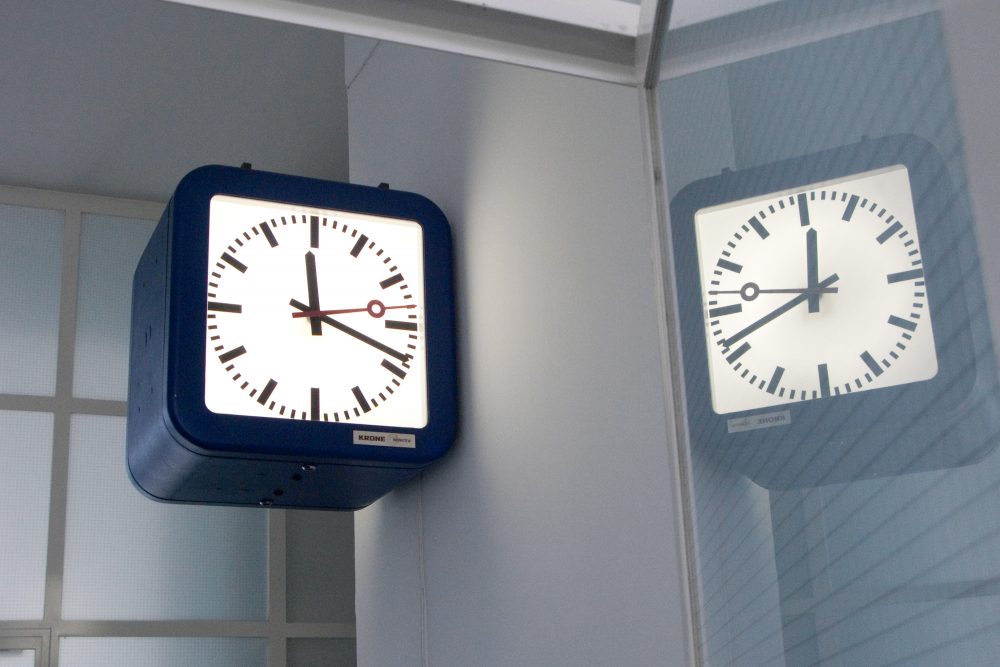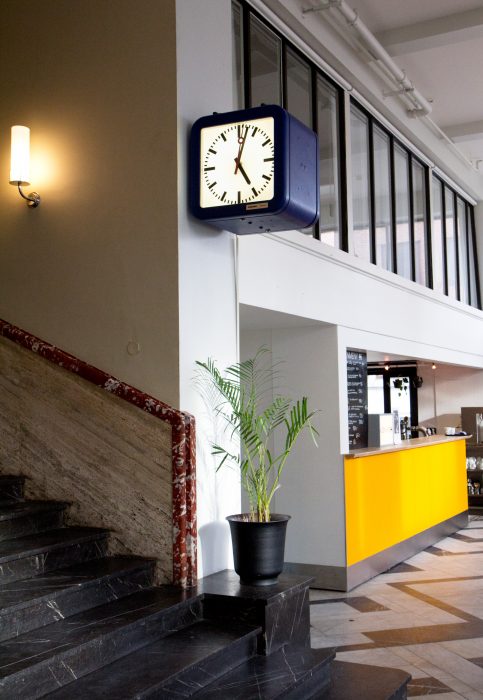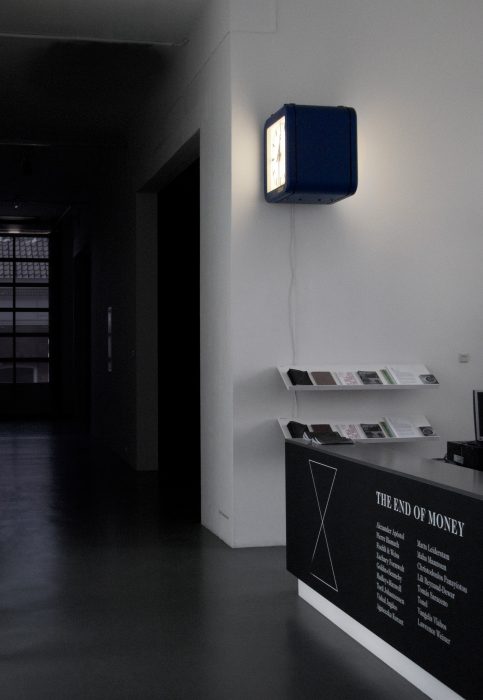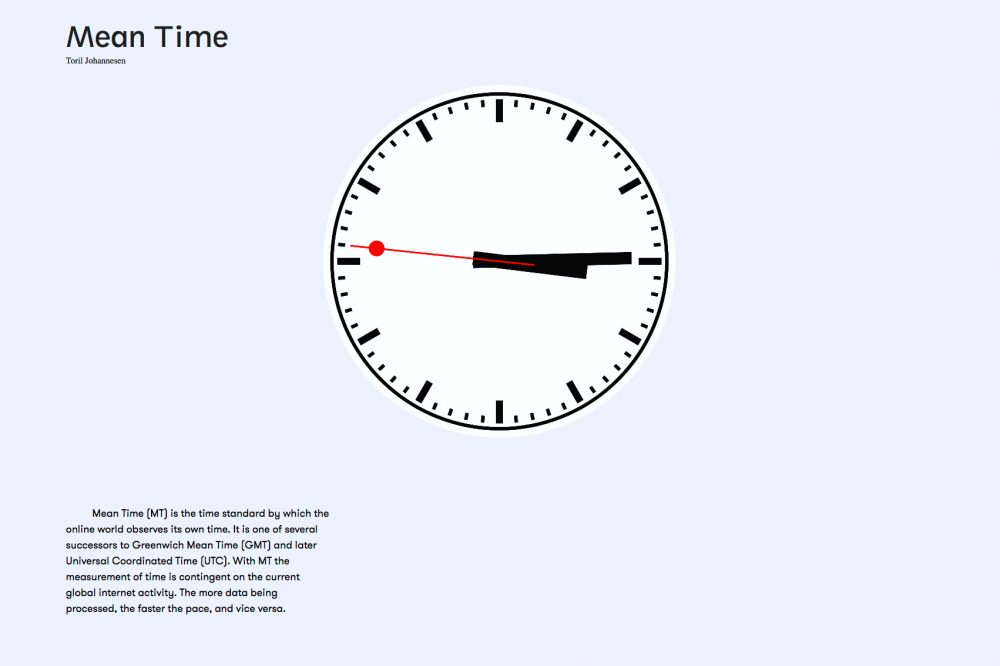Mean Time is a clock contingent on global internet activity. The clock mechanism is controlled by a computer that continuously retrieves information about traffic online. The information is taken from a service that sends pings to the largest internet servers, and forms the basis for estimating the amount of data being sent. When traffic is high, the clock runs fast, and when traffic decreases, the clock runs slower. Instead of representing time, the clock is controlled by activity.
The clock case is a railway station clocks with two clock faces. Efforts to synchronize, standardise, and establish a global time is historically linked to the development of the railway network by the end of the 1800s, a process that is also related to the unfolding of capitalism and ideas of progress. Over a century ago, the development of the railway contributed to a change in temporality, from multiple local time to one global time divided into time zones. In a similar way, the internet is changing our perception of time – for example, the time we spend working in front of a computer and how people in different locations are connected day and night in a new time zone.
Programming: Sindre Sørensen
Clockwork: Johannes Lavoll
Thanks to Espen Sommer Eide, Roar Sletteland and BEK – Bergen center for electronic arts.
Produced with support from City of Bergen and NBK/Vederlagsfondet.



